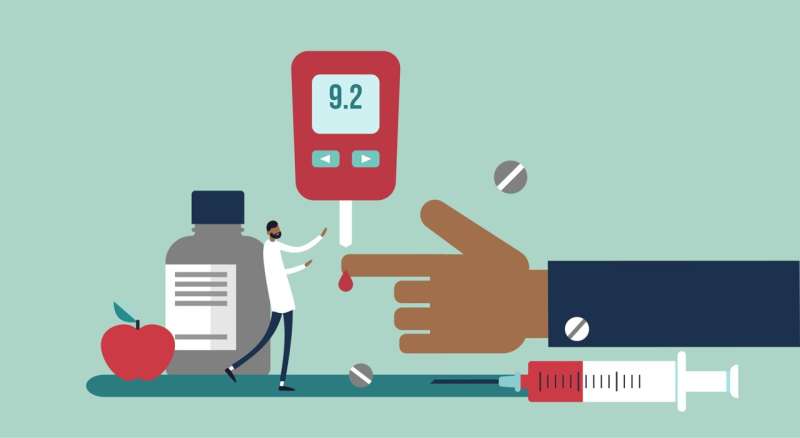This article has been reviewed according to Science X's editorial process and policies. Editors have highlighted the following attributes while ensuring the content's credibility:
fact-checked
proofread
Early intensified treatment cuts type 2 diabetes burden by USD 23 million in Korea

A recent study by WifOR Institute highlights the societal benefits of early intensified treatment for Type 2 diabetes patients in Korea. Over a 10-year period,12% more patients who started combination therapy during the early stages of the disease achieved sustained glycemic control compared to those who began with monotherapy.
Additionally, early intensified antidiabetes treatment resulted in a 14% reduction in diabetes-related complication events over the same period. These therapy strategies prevented 1.56 million lost work hours (649,696 paid, 919,444 unpaid) over a decade for the entire population, resulting in USD$23 million economic gain for Korea.
Dr. Malina Müller, head of health economics at WifOR Institute says, "Our Social Impact analysis reveals with hard numbers that early intensified antidiabetes treatment not only improves patients' health but also elevates their productivity and social engagement, benefiting both patients and their caregivers. These findings enable decision-makers to weigh the medical efficacy alongside health interventions' broader societal and economic effects."
The study, "Health and Productivity Benefits with Early Intensified Treatment in Patients with Type 2 Diabetes: Results from Korea," was commissioned by Novartis and published in the May 2024 edition of the journal INQUIRY: The Journal of Health Care Organization, Provision, and Financing.
The prevalence of diabetes mellitus (DM) worldwide is a pressing concern, with Type 2 diabetes mellitus (T2DM) accounting for approximately 90% of cases. In Korea, the economic burden of diabetes has prompted research into early and customized treatment strategies. These strategies enable effective disease control and reduce the risk of complications. However, budget constraints within health care systems challenge the implementation of these approaches.
WifOR Institute's Social Impact analysis underscores the importance of early intervention and tailored treatments in managing T2DM, not only for individual patient outcomes but also for wider societal and economic well-being.
The social impact of medical innovations quantifies and monetizes the productivity losses of paid and unpaid work which can be avoided due to a health intervention. Early intensified antidiabetes treatment improves chronically ill patients' ability to work and pursue daily activities. In addition, the potential for value creation resulting from unpaid work is considered. WifOR thus holistically measures the benefit to society regarding health and productivity effects.
Using a robust simulation model based on data from the VERIFY clinical trial and real-world evidence, the study compares outcomes of two treatment regimens: early intensified treatment (combination therapy with metformin and vildagliptin) versus a conventional stepwise approach (initial metformin monotherapy followed by combination therapy).
It covers a 10-year horizon with 6-month cycles and assesses probabilities of complications like stroke, myocardial infarction, and neuropathy. Population size is estimated based on Korean T2DM prevalence and the percentage of patients receiving any antidiabetes treatment subsequently controlled for the patients expected to receive early intensified treatment.
Productivity losses are evaluated using Korean employment data. Both deterministic and probabilistic sensitivity analyses are conducted to assess parameter uncertainty.
More information: Foteini Tsotra et al, Health and Productivity Benefits with Early Intensified Treatment in Patients with Type 2 Diabetes: Results from Korea, INQUIRY: The Journal of Health Care Organization, Provision, and Financing (2024). DOI: 10.1177/00469580241240106





















